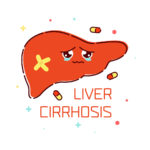By Bonnie Jenkins, Advanced Natural Wellness
Someday, someone will invent a quick and easy alternative to the dreaded colonoscopy. At least that’s what I keep hoping for. I recently had a routine colonoscopy—something everyone over the age of 50 should do. But I have even more reason to get screened. I have a history of diverticular disease.
Diverticular disease describes two common diseases of the colon, diverticulosis and diverticulitis. When small pouches form in the colon wall, the condition is called diverticulosis. Most people with diverticulosis don’t have any symptoms. However, the pouches, called diverticula, can become inflamed. When this happens, it becomes diverticulitis. If left untreated, diverticulitis can cause bleeding, blockages, tears and infection.
While mild cases of diverticulitis can be treated with rest, changes in your diet and antibiotics, serious cases—like the one I suffered from several years ago—may require surgery to remove the diseased portion of the colon. And the risk just grows larger as you get older. Although people under the age of 40 have a five to 10 percent chance of developing diverticular disease, the risk jumps to 50 percent in those over 65 and 65 percent in people 85 years of age and older. Here’s why age matters: Aging causes changes in collagen structure that can lead to the weakening of the colonic wall.
Open your arteries, improve blood flow for a new health miracle...
Did you know your circulatory system has over 60,000 miles of arteries, veins and other blood vessels, if stretched end to end?
But as you age, your blood vessels undergo changes, which may cause them to stiffen, thicken and get clogged.
GOOD NEWS! Doctors have now identified a “Miracle Molecule” inside your arteries that helps OPEN your arteries and IMPROVE blood flow.
It’s what Dr. Valentin Fuster calls it, "One of the most important discoveries in the history of cardiovascular medicine."To you, that means...
- Healthy blood pressure
- Sharper mind and memory
- Skyrocketing energy and muscular strength
- Increased pleasure and passion in the bedroom
- Improved circulation to every cell and organ in your body
Go here to discover a new natural way to significantly boost the levels of this miracle molecule in YOUR body NOW!
But this doesn’t need to be your fate. In fact, you just might be able to sidestep diverticular disease with one simple addition to your diet: Fiber. Researchers have noticed that a low-fiber diet seems to play a huge role. Countries where they continue to eat a high fiber diet have lower incidence of diverticular disease. Not so in the U.S., where people consume only about half the amount of fiber they need. But it hasn’t always been that way.
Are You Suffering From...
- Love handles and a pot belly
- Romance that isn't what it used to
- Forgetfulness and inattention
- Low (or no) strength and endurance
- A sex drive that's shifted into neutral...or worse
If so...you may have Mature Male Burnout. Click here to discover more about this unique condition and what you can do about it.
In the United States, diverticular disease was less common at the beginning of the 19th century and has been steadily increasing since the 1960s. Why? Less exercise, more fast food and less fiber. This type of diet encourages constipation, which is not only uncomfortable, it also increases the pressure inside your colon. This pressure can cause the weak spots in your colon to bulge out, forming diverticula.
If you want to reduce your risk of diverticular disease, increase your fiber intake. Start slowly to give your body time to adjust. Vegetables and fruits are a good source of fiber. As your body adjusts, increase fiber through whole grains and vegetable proteins, like beans and legumes.
The typical recommendation is 35 grams of fiber per day. It can be tough to consume that much from food alone. Fortunately, you can increase your fiber intake with supplements. One study demonstrated a beneficial effect of fiber supplementation in people who suffered from abdominal pain and pain with bowel movements. But which type of supplemental fiber is most effective? In a word, psyllium. Psyllium is a bulk-forming supplement that is high in both fiber and mucilage. Psyllium swells in the gut and forms a gelatinous mass that keeps feces hydrated and soft. The resulting bulk stimulates a reflex contraction of the walls of the bowel, followed by emptying. But this only occurs when you take psyllium with lots of water—at least eight ounces per dose. If you consume less than 35 grams of fiber from food, take 2 to 4 grams of psyllium two to three times per day.
Another good source of fiber is nuts and popcorn. Yes, nuts and popcorn. It’s true that people with diverticulosis were traditionally told to steer clear of these foods because doctors thought that their residue could lodge in the outpouches. But a new study turned that theory on its head. In the study, which tracked more than 47,000 men for 18 years, the risk of diverticulitis was 30 percent lower for those who ate popcorn at least twice a week than for those who ate popcorn less than once a month. The risk was also lower for men who ate nuts at least twice a week.
Even if you are mindful of what you eat and make sure you have plenty of fiber, diverticular disease is still possible, especially as you age. Unless you have symptoms—the sudden onset of pain or discomfort in the lower left side of the abdomen, a change in bowel habits, abdominal tenderness, fever, nausea and vomiting, constipation or diarrhea—you can probably put that colonoscopy off until your 50th birthday. But if you suffer from bowel problems, run—don’t walk—to your doctor to schedule am evaluation and a colonoscopy. While the preparation for the test is no picnic, the alternative of inflamed diverticuli or evencolon cancer can be far, far worse.
References:
Hale WB. Colonoscopy in the diagnosis and management of diverticular disease. Journal of Clinical Gastroenterology. 2008;42:1142-1144.
Rocco A. Treatment Options for Uncomplicated Diverticular Disease of the Colon. Journal of Clinical Gastroenterology. 2009 Jul 30. [Epub ahead of print]
Strate LL. Nut, corn, and popcorn consumption and the incidence of diverticular disease. Journal of the American Medical Association. 2008;300:907-914.
Weisberger L. Clinical inquiries: How can you help prevent a recurrence of diverticulitis? Journal of Family Practice. 2009;58:381-382.






